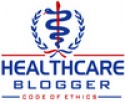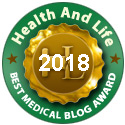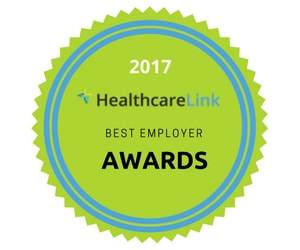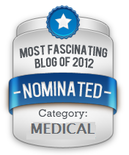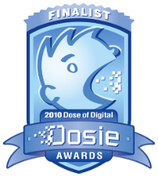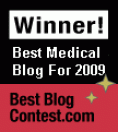Down the drain: $1.2 trillion.
That's half of the $2.2 trillion the United States spends on healthcare each year, according to the most recent data from accounting firm PricewaterhouseCoopers' Health Research Institute.
What counts as waste? The report identified 16 different areas in which healthcare dollars are squandered. But in talking to doctors, nurses, hospital groups and patient advocacy groups, six areas totaling nearly $500 billion stood out as issues to be dealt with in the healthcare reform debate.
1. Too Many Tests
Doctors ordering tests or procedures not based on need but concern over liability or increasing their income is the biggest waste of health care dollars, costing the system at least $210 billion a year, according to the report. The problem is called "defensive medicine."
"Sometimes the motivation is to avoid malpractice suits, or to make more money because they are compensated more for doing more," said Dr. Arthur Garson, provost of the University of Virginia and former dean of its medical school. "Many are also convinced that doing more tests is the right thing to do."
"But any money that is spent on a patient that doesn't improve the outcome is a waste," said Garson.
Some conservatives have suggested that capping malpractice awards would help solve the problem.
President Obama doesn't agree; instead, his reform proposal encourages doctors to practice "evidence-based" guidelines as a way to scale back on unnecessary tests.
2. Those Annoying Claim Forms
Inefficient claims processing is the second-biggest area of wasteful expenditure, costing as much as $210 billion annually, the PricewaterhouseCoopers report said.
"We spend a lot of time and money trying to get paid by insurers," said Dr. Terry McGenney, a Kansas City, Mo.-based family physician.
"Every insurance company has its own forms," McGenney said. "Some practices spend 40% of their revenue filling out paperwork that has nothing to do with patient care. So much of this could be automated."
Dr. Jason Dees, a family doctor in a private practice based in New Albany, Miss., said his office often resubmits claims that have been "magically denied."
"That adds to our administrative fees, extends the payment cycle and hurts our cash flow," he said.
Dees also spends a lot of time getting "pre-certification" from insurers to approve higher-priced procedures such as MRIs. "We're already operating on paper-thin margins and this takes times away from our patients," he said.
Susan Pisano, spokeswoman for America's Health Insurance Plans, said "hundreds of billions" of dollars can be saved by standardizing procedures and using technology -- something the White House has mentioned as a key to health care reform.
"For that to happen, we need the technology," she said. "Doctors and hospitals must adopt the technology, and we have to develop rules for exchanging of information between doctors, hospitals and health plans."
Pisano said the industry is launching a pilot program later this year that will allow physicians to communicate with all health plans using a standardized process.
3. Using the ER as a Clinic
More insured and uninsured consumers are getting their primary care in emergency rooms, wasting $14 billion every year in health care spending.
"This is an inappropriate use of the ER," said Dee Swanson, president of the American Academy of Nurse Practitioners. "You don't go to the ER for strep throat."
Since emergency rooms are legally obligated to treat all patients, Swanson said providers ultimately find ways to pass on the cost for treating the uninsured to other patients, such as to those who pay out-of-pocket for their medical care.
Dees also took issue with consumers who don't get primary care for their diabetes or blood pressure on a timely basis, hence finding themselves in the ER.
"Going to the doctor for strep throat would cost $65-$70. In the ER, it's $600 to $800," he said.
The $787 billion stimulus bill signed passed by President Obama earlier this year includes allocates $1 billion for a wellness and prevention fund, including $300 million for immunizations and $650 million for prevention programs to combat the rapid growth in chronic diseases such as obesity and diabetes.
4. Medical "Oops"
Medical errors are costing the industry $17 billion a year in wasted expenses, something that makes patient advocacy groups irate.
"Do we have a good health IT system in place to prevent this?" asked Kim Bailey, senior health policy analyst with consumer advocacy group Families USA.
Bailey suggested that processes such as computerized order entry for drugs and use of electronic health records (EHR) could help ensure that patients get the correct dosage of medications in hospitals.
The stimulus bill calls for the government to take a leading role in developing standards by 2010 to facilitate the adoption of health information exchanges across the system, including patient electronic health records by 2014.
Obama has repeatedly said that the use of technology in the health sector will help boost savings, enhance the coordination of care and reduce medical errors and unnecessary procedures.
5. Going Back to the Hospital
Bailey suggested that processes such as computerized order entry for drugs and use of electronic health records (EHR) could help ensure that patients get the correct dosage of medications in hospitals. Discharging patients too soon is a "huge waste of money," said Swanson.
"This happens a lot with elderly patients who are discharged prematurely because of insurance, bed unavailability or ageism," she said.
Many times, patients also don't follow instructions for care after discharge. "So complications arise and they are readmitted in a week," Swanson said.
PricewaterhouseCoopers estimates the cost of preventable hospital readmissions at $25 billion annually.
Among the reform plans, one proposal being considered is for Medicare to potentially penalize hospitals who readmit patients within 30 days of discharge.
6. You Forgot to Wash Your Hands!
Those ubiquitous dispensers of hand sanitizer are in hospitals for a reason: PricewaterhouseCoopers estimates that about $3 billion is wasted every year as a result of infections acquired during hospital stays.
"The general belief is that hospitals are getting much better in managing this than they have in the past," said Richard Clarke, CEO of Healthcare Financial Management Association, whose members include hospitals and managed care organizations.
Something as simple as hand-washing often can reduce the problem.
"Sometimes doctors are the most difficult people to convince to do this," said Clarke. "The challenge here is that patients sometimes come in with infections which then spread in the hospital."
The stimulus bill signed by Obama earlier this year includes $50 million for reducing healthcare-associated infections.
Other areas of waste identified in the PricewaterhouseCoopers report included up to $493 billion related to risky behavior such as smoking, obesity and alcohol abuse, $21 billion in staffing turnover, $4 billion in prescriptions written on paper, and $1 billion in the over-prescribing of antibiotics.
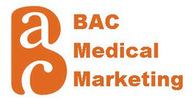
 RSS Feed
RSS Feed











